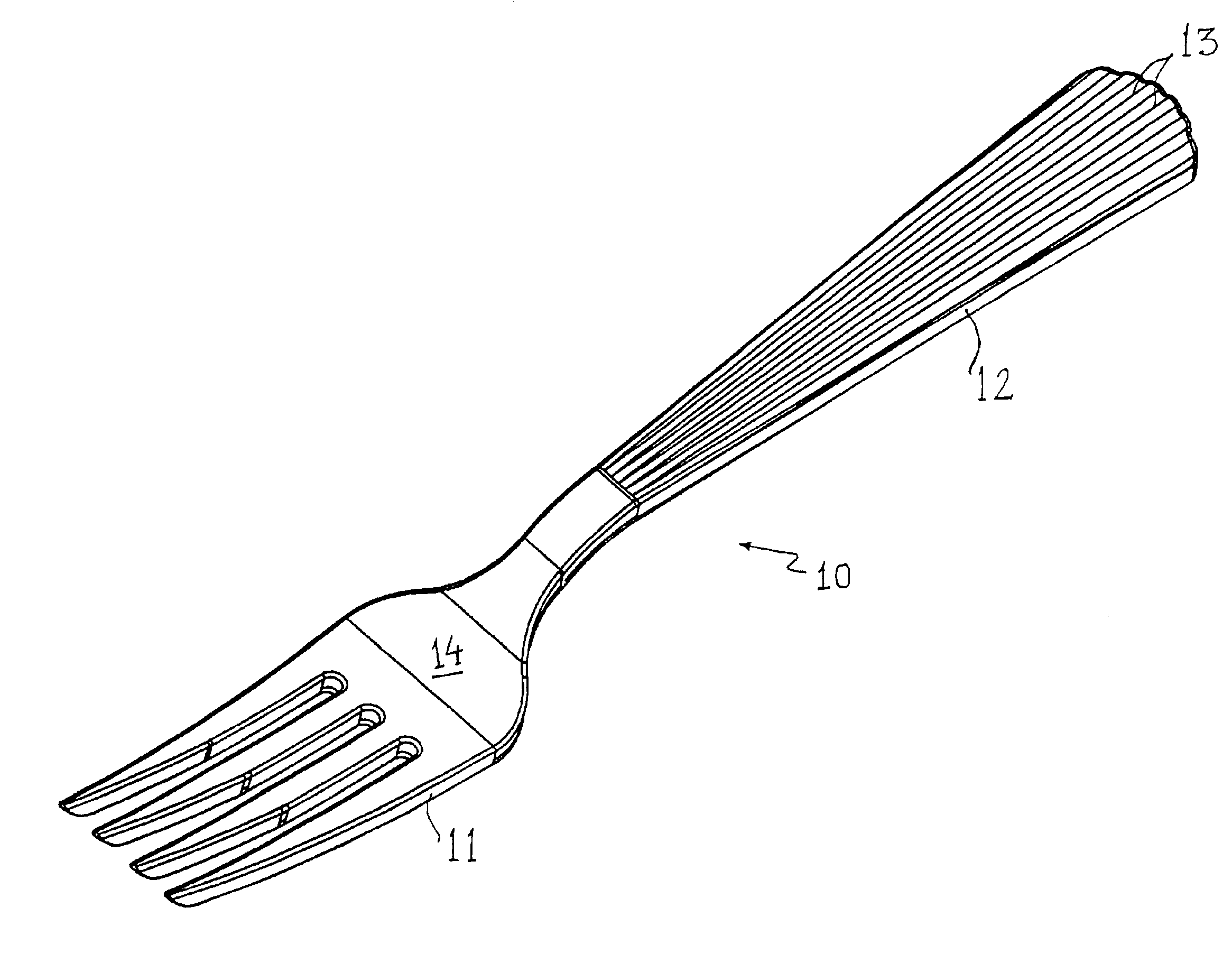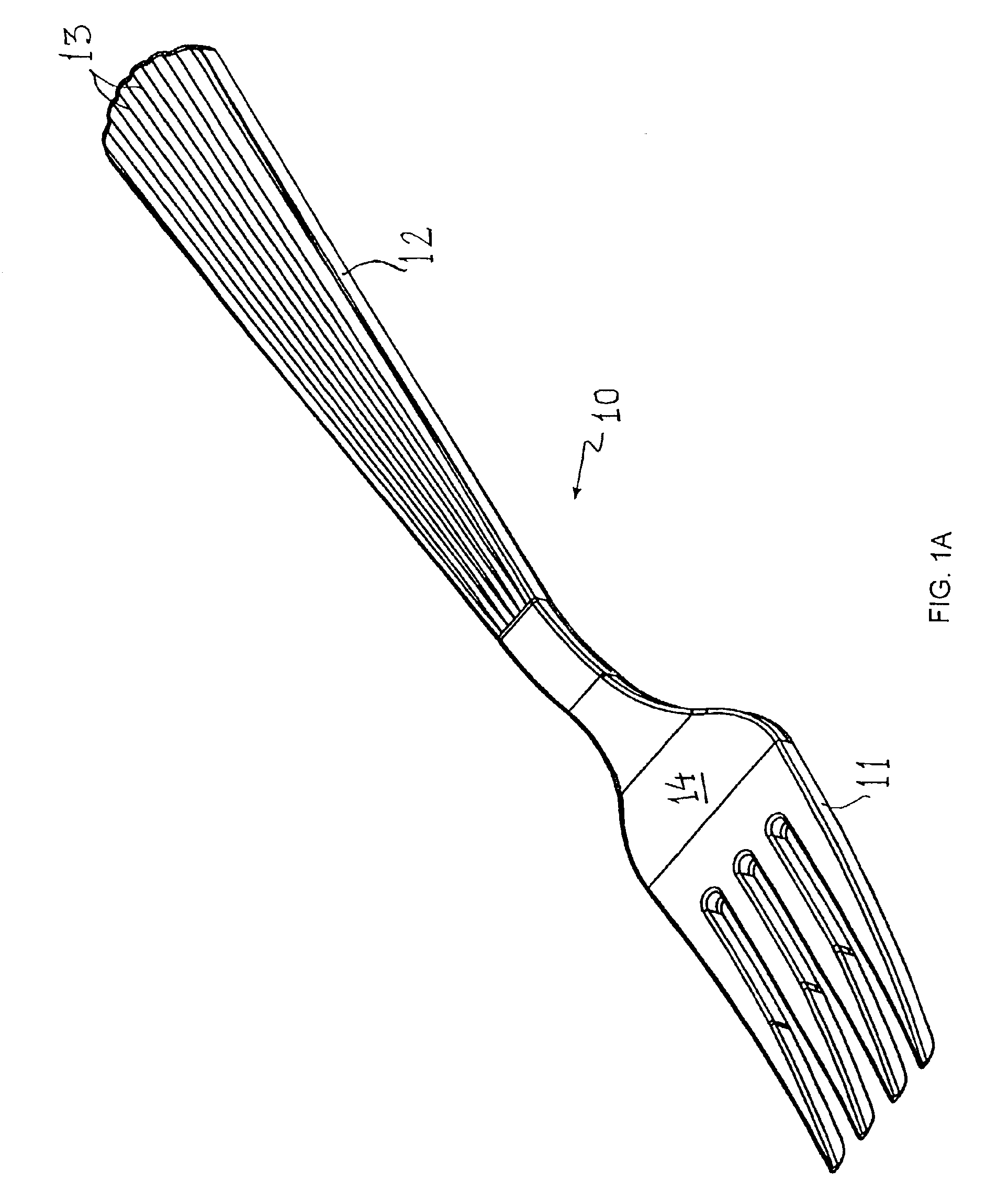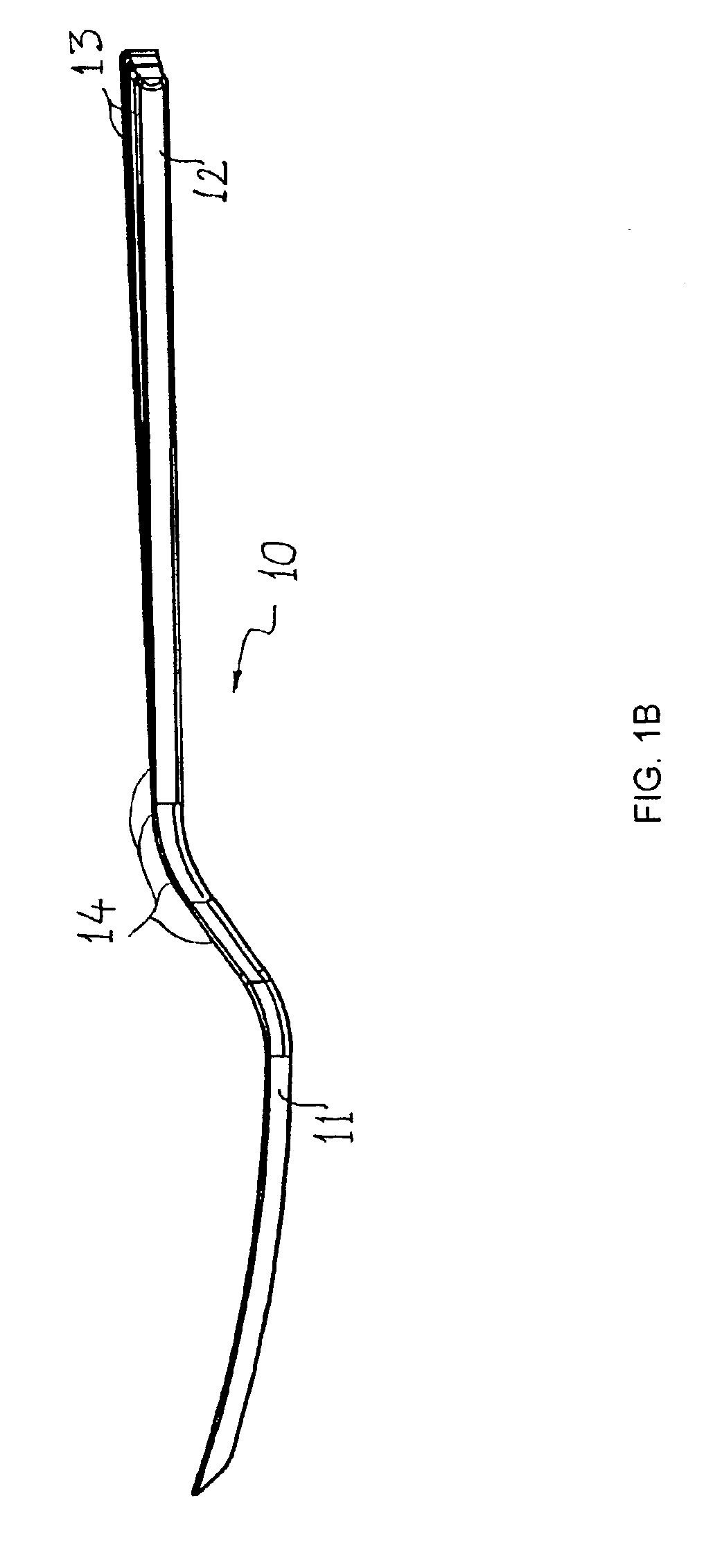Metallized cutlery and tableware
a technology of metalized plastic and cutlery, which is applied in the field of metalized plastic cutlery, can solve the problems of non-disposable metal cutlery along with other disposable food-service articles such as plates, cups and the like, which is unusual for restaurants and caterers, and the loss of valuable metal cutlery into trash or refuse containers along with disposable tableware and food remnants, so as to enhance the reflective appearance of the article, enhance the adhesion and abrasion resistan
- Summary
- Abstract
- Description
- Claims
- Application Information
AI Technical Summary
Benefits of technology
Problems solved by technology
Method used
Image
Examples
Embodiment Construction
[0044]The terms cutlery or cutlery items or utensils or eating implements or food-implements or food-handling implements or food service tools as used in this description or in any of the appended claims are used in a generic and broad sense. These terms encompass disposable plastic cutlery items molded into standard food-handling implements such as forks, spoons, knives, serving utensils and / or combinations thereof including spatulas, sporks, ladles, seafood forks, seafood picks, soup spoons, and the like. Accompanying items such as napkin rings, candle holders, and centerpiece receptacles are sometimes designed to match the cutlery items. Finally, the various assortments of goblets, glasses, soup bowls, dishes, trays, champagne flutes, lids, and the like are also sometimes matched to the rest of the serving items and are all within the scope of the present invention. The preferred embodiments are merely illustrations of the techniques, and there are many other variations and appli...
PUM
| Property | Measurement | Unit |
|---|---|---|
| thickness | aaaaa | aaaaa |
| thickness | aaaaa | aaaaa |
| optical density | aaaaa | aaaaa |
Abstract
Description
Claims
Application Information
 Login to View More
Login to View More - R&D
- Intellectual Property
- Life Sciences
- Materials
- Tech Scout
- Unparalleled Data Quality
- Higher Quality Content
- 60% Fewer Hallucinations
Browse by: Latest US Patents, China's latest patents, Technical Efficacy Thesaurus, Application Domain, Technology Topic, Popular Technical Reports.
© 2025 PatSnap. All rights reserved.Legal|Privacy policy|Modern Slavery Act Transparency Statement|Sitemap|About US| Contact US: help@patsnap.com



